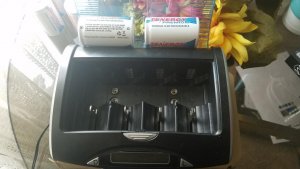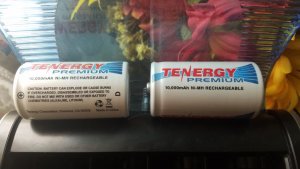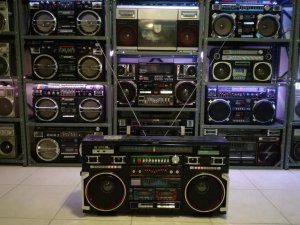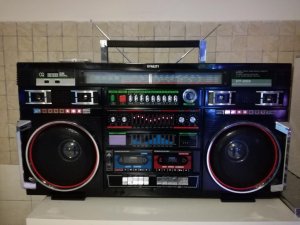Transistorized said:
You will enjoy these for sure. I have that exact same charger. The only way you can kill these and get a shorter lifespan would be to allow them to fully drain past 1 volt. I usually keep an eye on my battery indicator. If my box battery indicator starts to drop that signifies it's time to charge. As long as you charge them and do not allow them to go completely dead you should get a lot of use out of these.
My batteries look different but they are the same capacity as yours and I've had good luck with these.
20180425_133025.jpg
20180425_133021.jpg
Good information there! So, if I'm cranking a radio WITH NO battery meter or indicator light and it starts to show fading, I should shut down?
That makes it a little more difficult with no indicator. But yes. Absolutely. If you notice a change in performance (Sound, LEDs) check the battery voltages. The dangers of running multiple cells in series is you will always have a weaker cell that will collapse before it's neighboring cell. Depending on the radio, it may not indicate this until after that cell has gone below 1 volt. If you have a volt meter simply check them after each use. Sometimes I'll cheat a little and test each cell while they're in the box so I don't have to pop them out

However, when you see any of them down to 1.10 or less (even if the others are reading higher) pop them all in the charger for another charging round.
General rule I've found. .9 to 1.0 0% charge immediately | 1.01 to 1.09 5-10% left (Charge) | 1.10 to 1.2 25-35% left (will get warm but safe to charge) | 1.23 to 1.26 volts 50% depleted (will get very warm. I would not charge them yet) | 1.27 to 1.39 volts 75% to 100% charged (will get hot. Do not charge). The first two discharge cycles will be shorter. After they condition themselves you will start to see longer run times after that.
Letting them sit discharged or draining below 1 volt will start to cause damage. If a cell gets too low it can actually go into cell polarity reversal (cell reads positive on negative end and negative on positive end) and that is Really bad. The charger actually won't even charge it....it'll say bad. You can also damage them by overcharging but this charger has delta V so it is very good at not overcharging them if you stick them in at 1.2 volts or less. They'll get warm but not hot. If you throw them in with little to no discharge they'll get rather hot during charge....and that's not good either.
If you monitor their voltage, charge them when they get to 1.10 to 1.19 volts they'll last you many years and you will get the most use out of them. I have a set that is 4 years old and no noticeable change in performance.
As Jimmy said, that is some great info right there.
Some more questions....
When should the DISCHARGE feature be used on the charger?
Do they need a "Cool down" period before recharging?
Have you had any issues with these when using them continually? EXAMPLE: Out at the park all day with the radio ROARING the whole time, 5-8 hours.
If they are NOT going to be used, do they need to be charged before storing?
How about this situation: Fully charged, installed in a blaster, listen to music for an hour and normal volume, then let sit for a few weeks, then use again, then let sit, then use again. How do they fair in that situation?
You really have experimented with these and found their little idiosyncrasies. I had found a good pattern with my Energizers and they did last for years. In fact, the thing that killed my Energizer 2400's was I stopped using them for a period of time and then when I went back to them, they were dead. I was planning a 3 week camping trip and knew that the 2400's wouldn't last, so I bought two sets of Duracell's that ended up lasting me 4-5 months. After years of constant charging and use and then sitting (possibly while discharged) when I came back to the 2400's they were done.


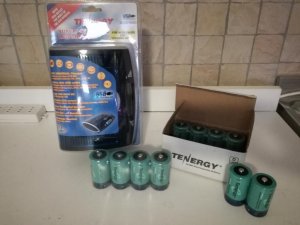 IMG_20180424_184626.jpg68.2 KB · Views: 3
IMG_20180424_184626.jpg68.2 KB · Views: 3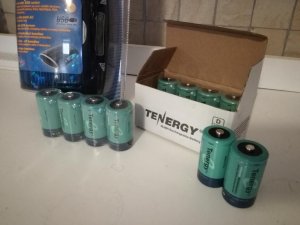 IMG_20180424_184638.jpg62.9 KB · Views: 3
IMG_20180424_184638.jpg62.9 KB · Views: 3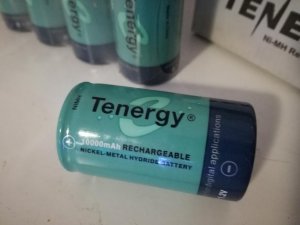 IMG_20180424_184656.jpg49.5 KB · Views: 3
IMG_20180424_184656.jpg49.5 KB · Views: 3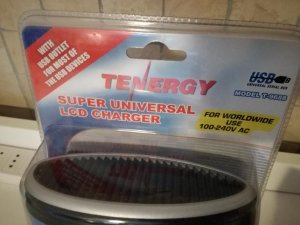 IMG_20180424_184710.jpg73.3 KB · Views: 2
IMG_20180424_184710.jpg73.3 KB · Views: 2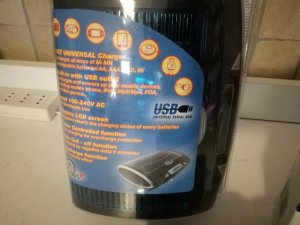 IMG_20180424_184717.jpg71.6 KB · Views: 2
IMG_20180424_184717.jpg71.6 KB · Views: 2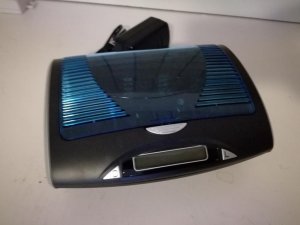 IMG_20180424_185115.jpg49.6 KB · Views: 1
IMG_20180424_185115.jpg49.6 KB · Views: 1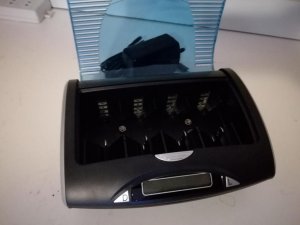 IMG_20180424_185120.jpg48 KB · Views: 1
IMG_20180424_185120.jpg48 KB · Views: 1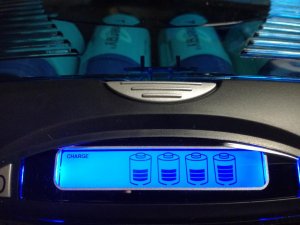 IMG_20180424_215419.jpg79.7 KB · Views: 1
IMG_20180424_215419.jpg79.7 KB · Views: 1


 I'm interested in seeing how well they work.
I'm interested in seeing how well they work. The thing people have to realise is that if you have a set of these cells in your arsenal, you will find yourself cranking your favourite, power hungry boxes outdoors ALL THE TIME!!
The thing people have to realise is that if you have a set of these cells in your arsenal, you will find yourself cranking your favourite, power hungry boxes outdoors ALL THE TIME!!



